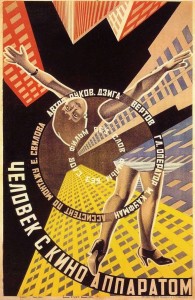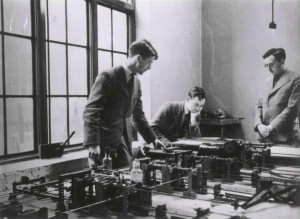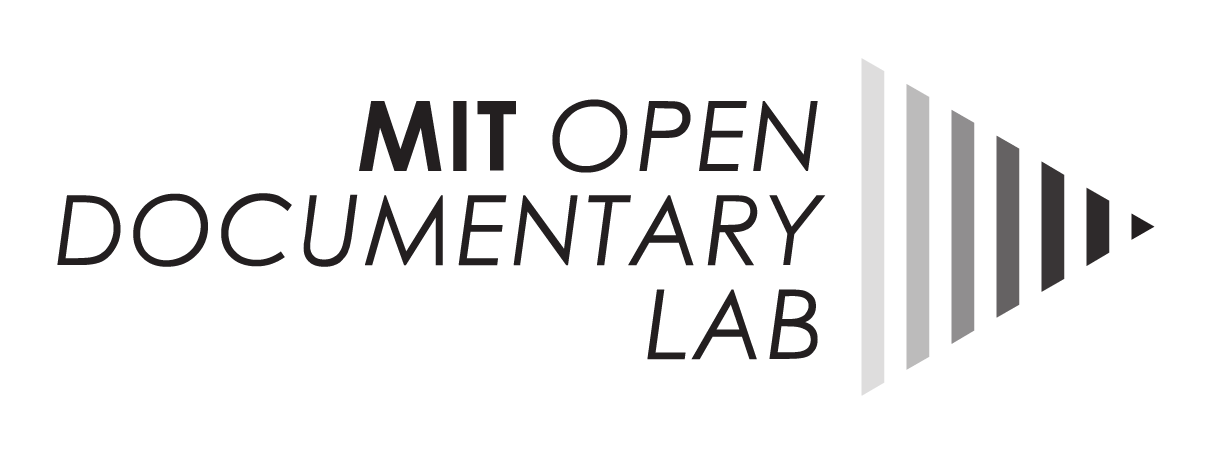
30 Jul Moments of convergence and innovation between documentary film and interactive media, Part 4
The Research Forum is OpenDocLab’s space for researchers to voice their opinions and test new theories. As part of our mission to promote the exchange of ideas about the new arts of documentary, we hope to encourage academic discussion and debate about these emerging forms by creating a place where researchers can develop ideas and interact with the field. The views presented here belong to their authors and will necessarily take different forms. In the spirit of the documentaries we study, we look forward to community collaboration and exchange as the ideas explored in the Research Forum take root, grow, and support the development of the field.
Moments of convergence and innovation between documentary film and interactive media: Decade 1930-1940
by Arnau Gifreu Castells
To formulate a relevant concept for the interactive documentary field we need to explore some aspects of the two key areas: the documentary genre and the interactive medium. This new series presents a combined, parallel and comparative historical chronology of these areas up to the present moment of confluence. The two stories we are following here begin, to a certain extent, in the seventeenth century. It should be noted, however, that a number of theorists, scientists, inventors and entrepreneurs had already developed a handful of theories and experiments that led up to what happened a few centuries later. We will focus our analysis on the seventeenth to the nineteenth century and place special emphasis on the twentieth and early twenty-first century. In this post we will focus on some points of convergence and innovation which occurred in the twentieth century.
The third decade of the twentieth century was particularly useful for the future development of interactive digital media as there were a number of very interesting contributions. We need to look at and analyze three leaders of the digital medium: Vannevar Bush, Alan Turing and Konrad Zuse.
Regarding the equivalences that happened during the third decade of the twentieth century, we see that 1929 is the year in which stylistic innovation in the field of documentary reached its climax with “The man with the movie camera” by Dziga Vertov. At the same time John Grierson had achieved his purpose in that a company became interested in films and thus created a branch devoted to documentary films: the EMB film Unit (the film unit of the Empire Marketing Board).

Figure 1. The man with the movie camera
Source: Wikipedia:
http://upload.wikimedia.org/wikipedia/commons/3/34/Man_with_a_movie_camera.jpg
The year 1930, when the great pieces of Vertov and Grierson were produced, is notorious for interactive media because Vannevar Bush presented the first analog computer in history (Differential Analyzer). In 1935 he presented a second version, the components of which were already electromechanical with manual input via punched cards. At the same time the first film unit was created with the sponsorship of a large company, and these were the years of movies that found different trends, like “Berlin, Symphony of a great city ” (Walter Ruttman, 1927), “Earth” (Alexander Dovzhenko, 1927), “Las Hurdes, tierra sin pan” (Luis Buñuel, 1932) and Un Chien andalou (Luis Bunuel and Salvador Dali, 1928). Also during these years the Workers Film and Photo League were founded in New York (1931) and National Socialism began to prevail in Europe due to the economic crisis and the weakness of the ruling leftist governments.

Figure 2. Differential Analyzer
Source: Wikipedia:
http://upload.wikimedia.org/wikipedia/commons/3/36/DA_Cambridge_c1937.jpg
Regarding the documentary genre, these three currents that developed after the invention of the Lumière brothers were three initial ways to approach the film documentary, according to Erik Barnouw: the explorer, the journalist and the painter, reaching their peak and beginning to be old fashioned, but not before leaving a considerable mark and a masterpiece of each proposal, “Berlin, symphony of a city” (Walter Ruttman, 1927), “The man with the movie camera” (Dziga Vertov, 1929), and a few years before the first movie considered to be the first documentary in history “Nanook of the North” (Robert Flaherty, 1922).
Arnau Gifreu Castells (PhD)
Research Affiliate, MIT Open Documentary Lab
agifreu@mit.edu
References
Buñuel, Luis(dir.). Un chien andalou. 17 min. Blanc i negre, 1929.
Buñuel, Luis (dir.). Las hurdes (Tierra sin pan). 30min, 1933.
Dovzhenko, Alexander (dir). Earth, 70 min, 1930.
Flaherty, Robert(dir.). Nanook of the North. 79 min. Revillon Frères, 1922.
Gifreu, A. (2012), The interactive documentary as a new audiovisual genre. Study of the emergence of the new genre, approach to its definition and taxonomy proposal and a model of analysis for the purposes of evaluation, design and production. [Doctoral Thesis]. Barcelona: Universitat Pompeu Fabra. Communication Department.
Gifreu, A. (2013), Pioneros de la tecnología digital. Ideas visionarias del mundo tecnológico actual. Barcelona: Tic Cero. Editorial UOC.
Jones, S. (2003), Encyclopedia Of New Media: An Essential Reference to Communication and Technology, New York: The Moschovitis Group.
Lee, J.A.N. (1995), Computer Pioneers. Los Alamitos, California: IEEE Computer Science Press.
Norman, J. M. (2005), From Gutenberg to the Internet: a Sourcebook on the History of Information Technology.Vol. 2, Novato California: History of Science.
Ruttman, Walter(dir.). Berlin: Symphonie der Grosstadt. 65 min. Fox Film Corporation. Fox Europa, 1927.
Vertov, Dziga(dir.). Celovek kinoapparatom. 66 min, 1929.
Wikipedia. Differential Analyser: http://en.wikipedia.org/wiki/Differential_analyser
List of quoted experiments/innovations
Differential Analyzer
The differential analyser is a mechanical analogue computer designed to solve differential equations by integration, using wheel-and-disc mechanisms to perform the integration. It was one of the first advanced computing devices to be used operationally. Professor Stephen Boyd at Stanford University provides a brief explanation of its working.
The first widely practical differential analyser was constructed by Harold Locke Hazen and Vannevar Bush at MIT, 1928–1931, comprising six mechanical integrators. In the same year, Bush described this machine in a journal article as a “continuous integraph”. When he published a further article on the device in 1931, he called it a “differential analyzer”,
Further readings
Research Forum | Arnau Gifreu Castells on Documentaries and Digital Media, Part 1
Research Forum | Arnau Gifreu Castells on Documentaries and Digital Media, Part 2
Research Forum | Arnau Gifreu Castells on Documentaries and Digital Media, Part 3
Research Forum | Arnau Gifreu Castells on Documentaries and Digital Media, Part 4
Research Forum | Arnau Gifreu Castells on Documentaries and Digital Media, Part 5
Interactivity technologies, key factor for the interactive documentary (i-docs)
The evolution of the Internet, key factor for the interactive documentary (i-docs)
The evolution of the Internet, key factor for the interactive documentary (II) (i-docs)
The interactive documentary during the evolution of the Internet: giving examples of the different phases. Assumptions about the technological future. (i-docs)



